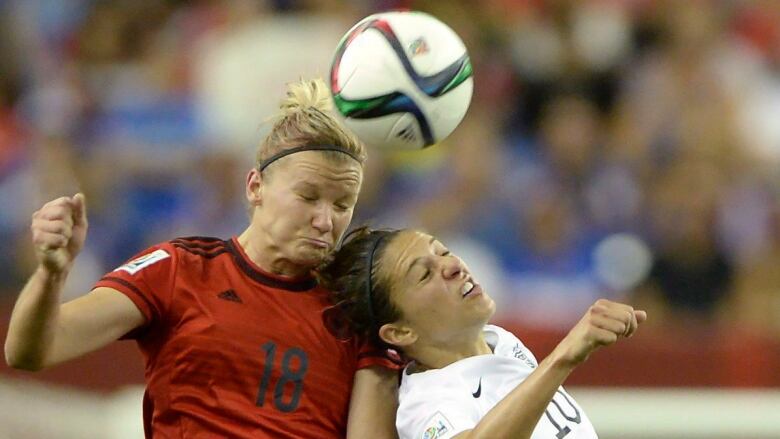Soccer concussions more likely from contact with foe than ball, study finds
Over three-quarters of soccer concussions of U.S. high school boys contact-related

A multi-year study of high school soccer games found that while concussions most often occur when a player attempts to use their head to strike the ball, collisions were a more frequent cause of the concussions than the ball itself.
About 78 per cent of header-related concussions for boys in U.S. high school games were caused by collisions with another player, according to a study published Monday in the Journal of the American Medical Association's JAMA Pediatrics journal. The total included any contact with the head resulting in a concussion, including another person's head, shoulders or elbows.
For girls, 62 per cent of headball-related concussions resulted from a collision with another player.
Researchers logged a total of 627 concussions in 1,393,753 soccer practices or competitions between 2005 and 2014.
Dawn Comstock, the University of Colorado public health researcher who led the study, believes that officiating to make the sure games are clean could help the reduce the number of incidents.
"If we just enforce those kind of rules to eliminate or at least reduce athlete-to-athlete impacts, that would do more to
reduce concussions than just banning heading alone," Comstock said.
Dr. Jeffrey Bazarian of the University of Rochester Medical Center in New York cautioned that it would be difficult to know how many concussions could be prevented by enforcing current rules.
"When two players go up for a head ball, they're both following the rules," said Bazarian, who wasn't involved with the new research.
He stressed that concussions are treatable, and the real question is how repeated hits to players' heads impact them later on.
Studies have shown long-term effects for some concussion sufferers that include issues with memory, planning and perception.
Researchers at St. Michael's Hospital in Toronto reviewed the evidence on concussions in soccer from hits to the head from other players' heads, shoulders and last year reported finding a higher incidence of concussions among females than males playing soccer.
With files from CBC News












_(720p).jpg)


 OFFICIAL HD MUSIC VIDEO.jpg)
.jpg)



























































































